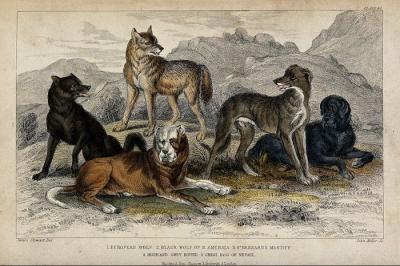Dr. William Brown
Special to The Lake Report
Wolves were domesticated roughly 30,000 years ago and cats about 9,500 years ago – but what about humans?
Fossil and DNA records suggest humans may have domesticated themselves – as early as 80,000 years ago and possibly much earlier. Why and how?
The evolutionary pressures for such changes aren’t so surprising. As the size of human communities increased, so did social complexity, which made the challenges of sorting out who’s who and successfully navigating the social landscape, more challenging.
To which the answers may have been for natural selection to favour behavioural traits such as social intelligence – reading the intentions of others and getting along with them – which are associated with altering hundreds, if not thousands of genes. The latter were accompanied by physical changes: a flatter face, less prominent nose and brow ridges and smaller teeth.
In a now famous study in the 1950s, Russian geneticist Dimitri Belyaev changed the behaviour of wild foxes – normally wary and aggressive – into domesticates, whose behaviour was like pet dogs.
He did this by mating the most docile foxes in successive generations. Just as striking were the accompanying changes in the appearance of the foxes: their snouts became shorter and rounder, the legs shorter and stouter, the ears floppier, the tail curlier and the colour and pattern of their fur changed – all in less than 30 generations.
The changes in the foxes were much too quick for the usually staid course of natural selection acting on random mutations. Such rapid and dramatic behavioural and physical changes suggest the strong hand of epigenetics – the selective activation and silencing of genes already present by the methylation of bases, the influence of chromatin proteins and/or non-coding RNA acting selected genes.
All or some of these changes can be passed on from generation to generation without altering the base sequence of the genome. In the case of the foxes, such epigenetic changes apparently silenced genes associated with “wild” behavioural and anatomical traits, while favouring the equivalent “docile” traits.
Such a mechanism presupposes that the requisite genes – wild and tame – already existed in the fox’s genome: it was only a matter of switching which genes were turned on and which turned off.
That seems to be the case on the Gallipolis islands where in some birds the beak size and shape can change in a season or two in response to environmental change – the genes favouring different-sized and shaped beaks existing already in the bird’s genome. A similar mechanism probably explains changes within a few generations in the size and shape of some cichlid fish in Africa’s Lake Victoria, in response to environmental changes.
Human development, beginning with a single fertilized egg and the subsequent evolution of that cell into the hundreds of different types of cells of what will become the human body, employs similar mechanisms to activate and silence cells in a wonderfully orchestrated and finely timed sequence.
Every cell has the same genome (except sperm and unfertilized egg cells, which have one copy of the genome). Evidence that each mature cell retains the whole genome rests with the fact that mature cells from skin or elsewhere, can, with few exceptions, be reverse engineered by as few as four genes backward to a stem cell.
That may then, with some further chemical manipulation, be made to selectively differentiate into mature liver cells, bone or cartilage cells, and even specific types of brain cells, by controlling which genes are active and which inactive.
It’s been one of biology’s most stunning achievements in the last few decades – worth several Nobel prizes – unraveling the mysteries of the biochemistry and machinery of the cell.
And, if that isn’t enough to spark your interest, what about recent evidence suggesting that mapping the pattern of methylation of DNA’s bases in a hitherto mysterious closely-related species — the Denisovans — can be used to reconstruct the probable appearance of the face, of in this case, a 160,000-year-old female teenage Denisovan. Remarkable!
What about felines?: Cats were more recent domesticates, beginning about 9,500 years ago or about the same time humans took up farming in the Middle East. In their case, tameness and a willingness to hang out with humans, whether for food or company, were associated with changes in some of the 281 genes recently found to differ between near Eastern and European wildcats and domestic cats.
Dr. William Brown is a professor of neurology at McMaster University and co-founder of the Infohealth series held on the second Wednesday of each month at the Niagara-on-the-Lake Public Library.










